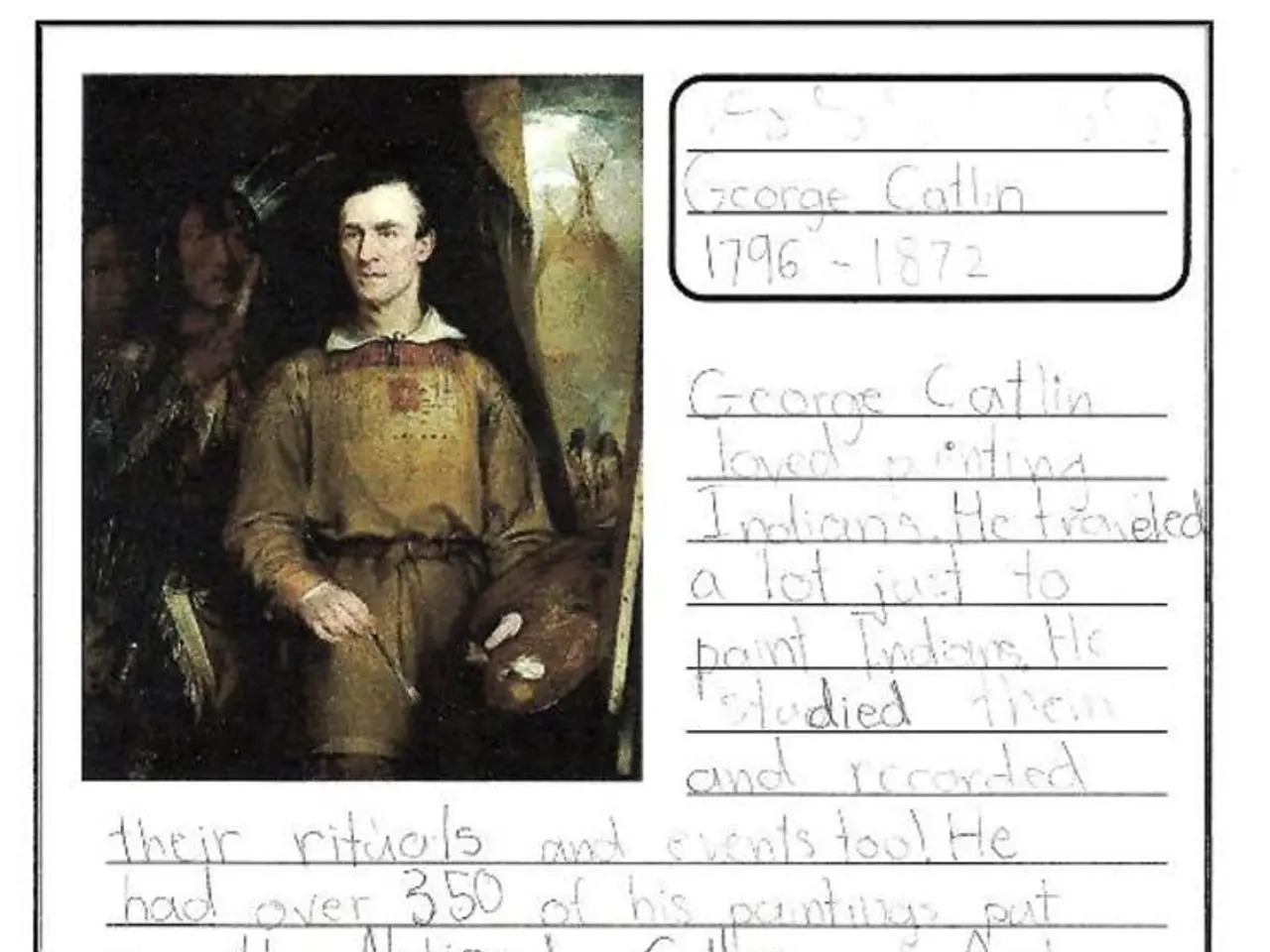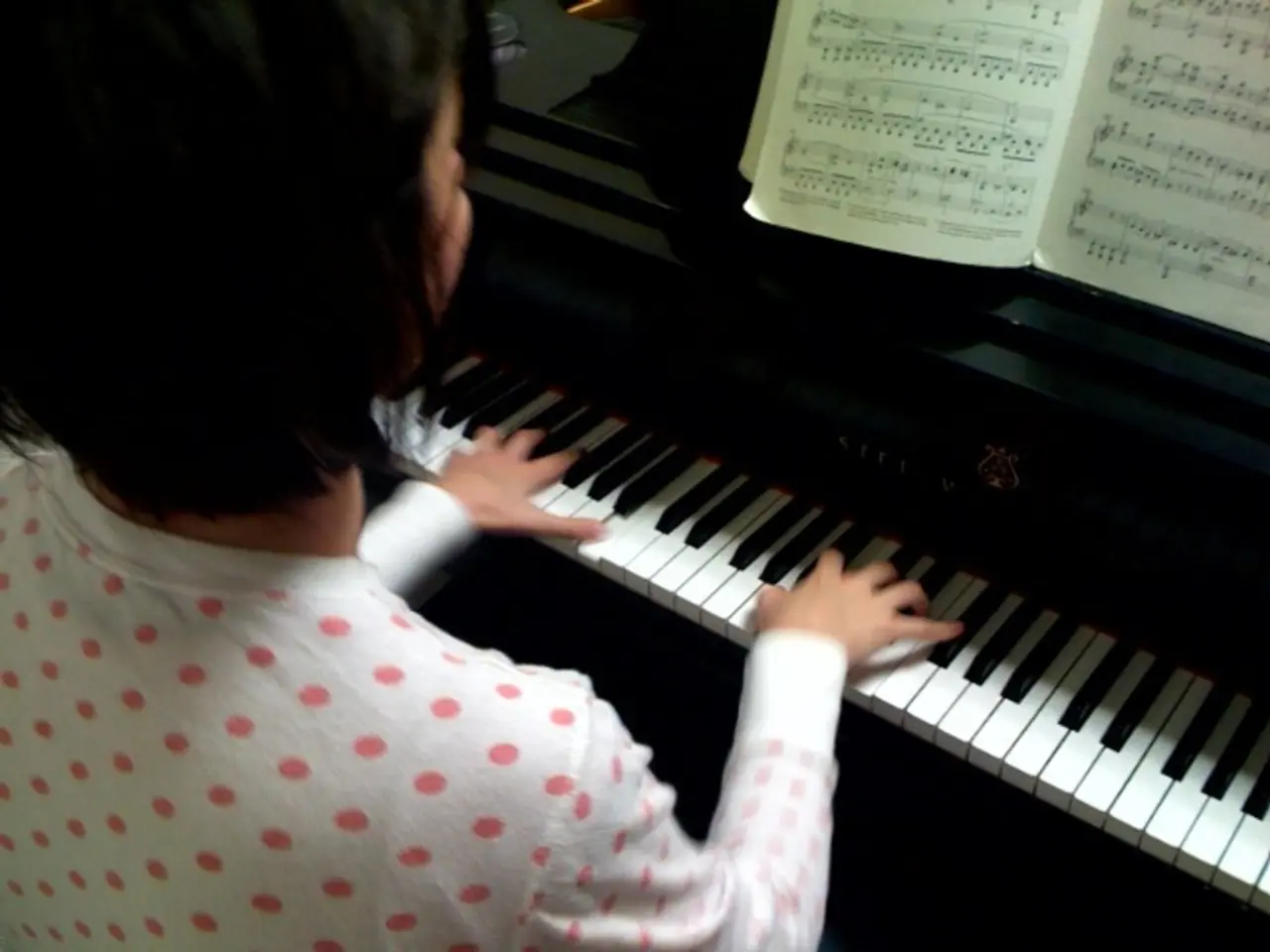Ancient Prince's Top Knot Showcased on World's Oldest Helmet, Hailing from Mesopotamia
==============================================================================
Meskalamdug's Helmet, a 15-karat gold helmet shaped like a wig, is one of the world's oldest known helmets, dating back to around 2600 B.C. This remarkable artifact was discovered in 1927 by British archaeologist Sir Leonard Woolley in the Royal Cemetery at Ur, Mesopotamia (now modern Iraq) [1][2][4].
The helmet, richly decorated to imitate the wavy hair and ears of its wearer, is believed to have belonged to Meskalamdug, a Sumerian prince whose name means "hero of the good land." Although the tomb where it was found was not as large or richly furnished as other royal tombs, suggesting that the deceased was probably a prince rather than a king of Ur [1][3].
The helmet, which is 8.9 inches (22.7 centimeters) tall and 8.3 inches (21 cm) wide, was made to be life-size and is thought to have been used ceremonially rather than as practical armor, reflecting the status and identity of elite Mesopotamian royalty of the early third millennium BCE [1].
After its discovery, two copies of the helmet were made, one for the British Museum and another for the Penn Museum. The original helmet is currently housed at the Iraq Museum in Baghdad, having been hidden and protected during the conflicts in the region, including the First Gulf War, and recovered in 2003 [1].
The hand-beaten gold of Meskalamdug's Helmet was modeled and engraved to represent a hairstyle with a quilted cloth lining. Early 20th century goldsmith James Ogden described the helmet as "perhaps a ceremonial headdress." The small holes around the rim of the helmet were likely used to secure the quilted cloth lining [1].
Meskalamdug's Helmet shares similarities with the hairstyles and helmets worn by Mesopotamian rulers Eannatum and Sargon the Great. This artifact provides valuable insights into early Mesopotamian royal burials and symbolic craftsmanship [1][3][4].
| Feature | Details | |-----------------------------|--------------------------------------------| | Material | 15-karat gold | | Shape | Shaped like a wig with detailed hair and ears | | Date | Circa 2600 BCE (Early Dynastic III period)| | Discoverer | Sir Leonard Woolley (1927) | | Location found | Royal Cemetery, Ur, Mesopotamia (modern Iraq)| | Owner | Meskalamdug, likely a Sumerian prince | | Purpose | Ceremonial helmet | | Current location | Iraq Museum, Baghdad |
References:
[1] Woolley, Sir Leonard. "Mesopotamia: The Land of the Two Rivers." Macmillan and Co., Ltd., 1928. [2] "Meskalamdug's Helmet." The British Museum, 2021. https://www.britishmuseum.org/collection/object/P_2001-0601-1 [3] "Meskalamdug." Ancient History Encyclopedia, 2021. https://www.ancient.eu/Meskalamdug/ [4] "Ur." Ancient History Encyclopedia, 2021. https://www.ancient.eu/Ur/
The ceremonial use of Meskalamdug's Helmet suggests that its purpose was not for practical armor but rather as a symbol of his high status within early Mesopotamian royalty. This beautifully crafted artifact, shaped like a wig and richly decorated, serves as a significant example of ancient entertainment, offering insights into the symbolic and ceremonial aspects of the Sumerian culture.




